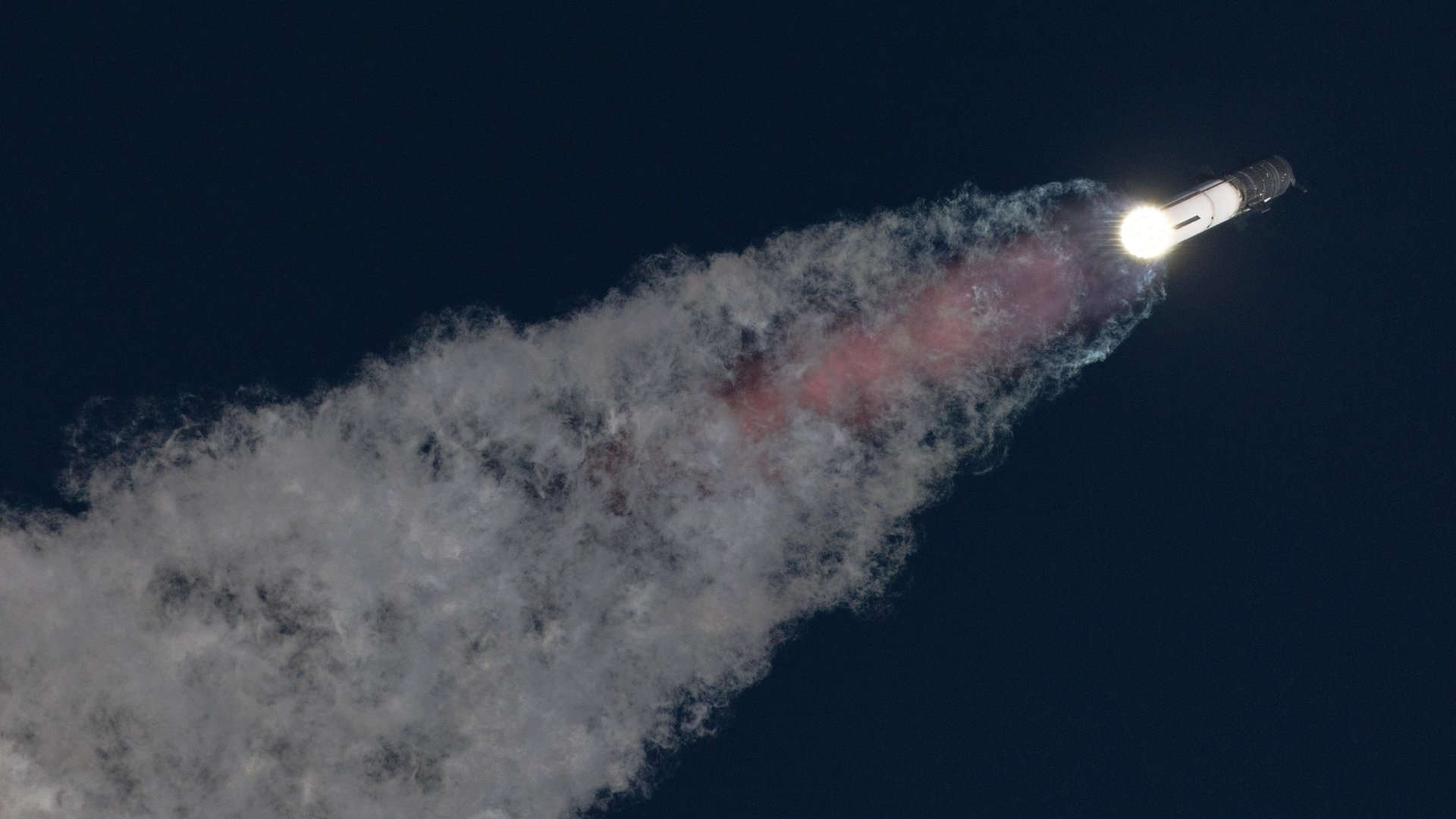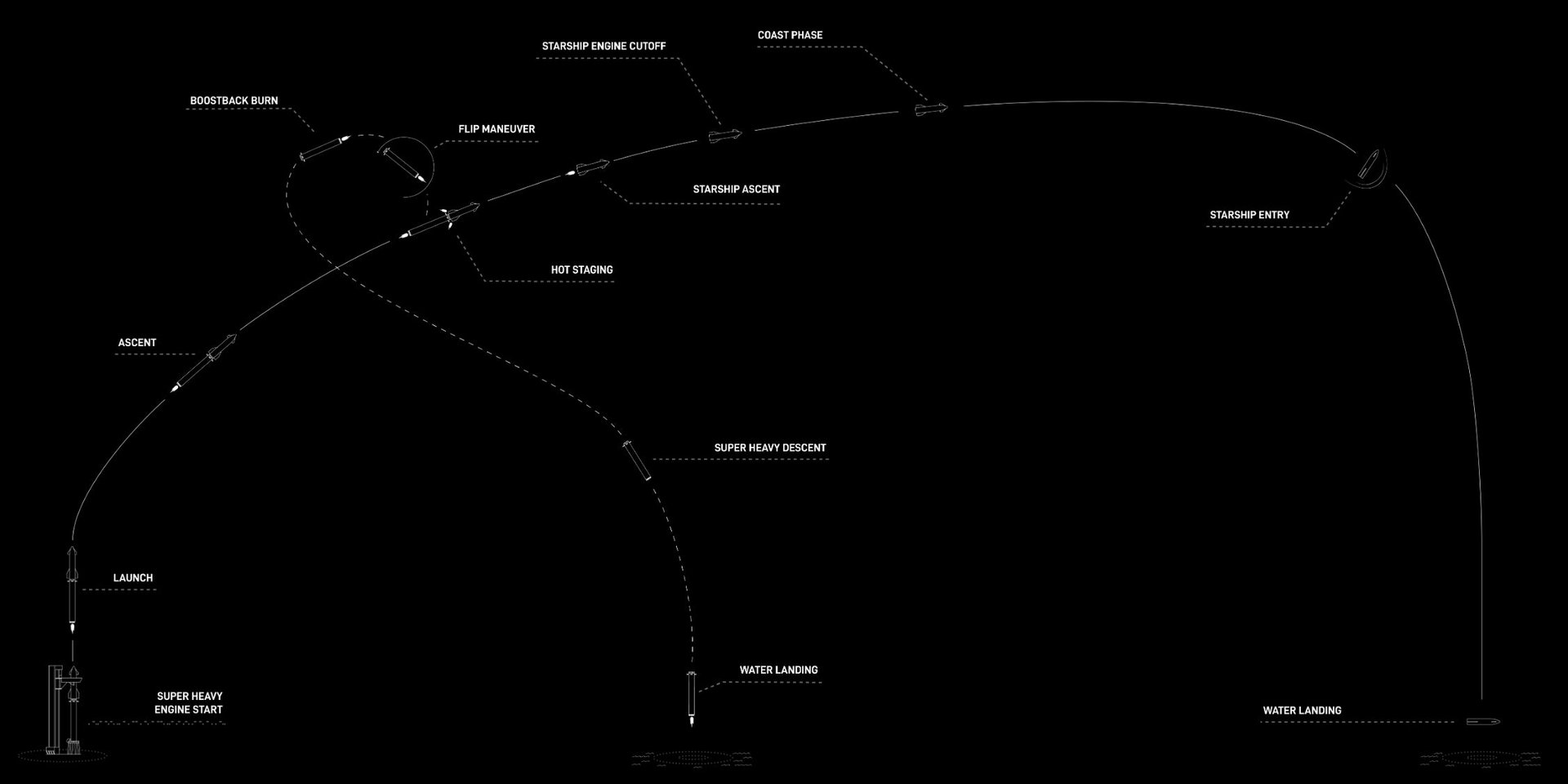SpaceX's next Starship test flight will push its megarocket to new extremes
The last two test flights by Elon Musk's space company resulted in the premature destruction of the two-stage rocket

SpaceX works under an iterative testing philosophy, using each mission to improve upon the next. Accordingly, the Elon Musk-led company is aiming to push its experimental megarocket, Starship, even further during its third test flight, which could happen later this week.
Suggested Reading
We are potentially hours away from the third integrated flight test of SpaceX’s Starship megarocket, with launch from Starbase in Boca Chica, Texas, slated for the morning of Thursday, March 14. The company’s livestream will be made available on X, with the broadcast beginning at 7:30 a.m. ET and the launch happening at 8:00 a.m. ET or thereabouts.
Related Content
At least, that’s the plan; SpaceX still needs to procure a launch license from the U.S. Federal Aviation Administration (FAA). That said, the company is proceeding as if it’s a done deal, installing the rocket’s flight termination system (FTS) and issuing media invites for the setting up of cameras.
For the third flight, SpaceX is set to tackle some challenging milestones. Starship remains an experimental rocket, and as such, success is not guaranteed. The previous two test flights, performed on April 20 and November 18 of last year, resulted in the premature destruction of the two-stage rocket, but each flight takes the company further along in the developmental process.
“This rapid iterative development approach has been the basis for all of SpaceX’s major innovative advancements, including Falcon, Dragon, and Starlink,” the company explains on its launch page. “Recursive improvement is essential as we work to build a fully reusable transportation system capable of carrying both crew and cargo to Earth orbit, help humanity return to the Moon, and ultimately travel to Mars and beyond.”
During the second test, for example, Starship flew for twice as long as the first test, and the 400-foot-tall (122-meter) rocket pulled off a hot staging maneuver to improve stage separation, allowing the upper stage to fly independently for nearly seven minutes and even reach space—a first for the launch vehicle. Both stages failed, however; filter blockage was blamed for the destruction of the Super Heavy booster, while leaking liquid oxygen was deemed the cause of the upper stage failure. In total, the FAA investigation, led by SpaceX, identified 17 corrective actions required in advance of a third flight test.

SpaceX has identified several key goals for the third flight. In addition to the successful ascent and burn of both stages, the company plans to open and close Starship’s payload door, achieve the first-ever re-light of a Raptor engine in space, and execute a controlled reentry of Starship.
As part of a $53.2 million “Tipping Point” contract with NASA, SpaceX is also planning a propellant transfer demonstration while the upper stage is in its coasting stage. Eventually, SpaceX plans to use Starship “tankers” for orbital refueling, using an approach similar to aerial refueling. For the upcoming demo, some 10 metric tons of liquid oxygen will shift from one tank to another—a feat never before accomplished on this scale. This test will not see two Starships come together in space, but SpaceX and NASA view the test as a critical step in advancing the necessary technology.
This test flight will also see Starship fly on a different trajectory than its two predecessors. Instead of splashing down in the Pacific Ocean near Hawaii, the upper stage will target a splashdown in the Indian Ocean. “This new flight path enables us to attempt new techniques like in-space engine burns while maximizing public safety,” SpaceX said.
The upcoming flight will feature the newly implemented flame deflector system, or water deluge system, which proved effective during the second flight test and is scheduled to engage about 10 seconds before liftoff. At T-3 seconds, all 33 Raptor engines will ignite, setting the stage for a crucial sequence of events. The flight will reach its maximum aerodynamic pressure, known as MaxQ, at 52 seconds into the launch. Following this, the booster will reach Most Engines Cut Off (MECO), with most engines shutting down at 2 minutes and 42 seconds (and yes, you read that correctly—it’s “most” and not “main” engines cut off, as several Raptors will remain alight during this phase). This will be immediately followed by hot-staging and stage separation just two seconds later.
The booster’s boostback burn is slated to start at 2 minutes and 55 seconds. If the booster is still functioning at this point, it will shut down at 3 minutes and 50 seconds. The booster’s landing burn will then commence at 6 minutes and 46 seconds, aiming for a softish water landing in the Gulf of Mexico just after the seven-minute mark of the mission. Both the Super Heavy booster and Starship upper stage are meant to be fully reusable, but while the upper stage has already displayed this capability, the Super Booster has not yet done the same.
Meanwhile, Starship will be on a trajectory heading toward the Indian Ocean. The engine cutoff for Starship is planned for 8 minutes and 35 seconds after launch, followed by atmospheric reentry and a planned crash landing in the Indian Ocean. A landing burn for the upper stage doesn’t appear to be part of the plan.
These timelines assume a successful mission, of course. Failure could happen at any point, but hopefully not. With two flights already under its belt, it’ll be interesting to see how far SpaceX can take its revolutionary megarocket.